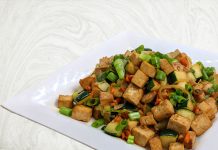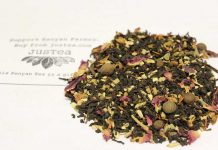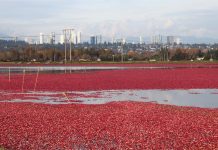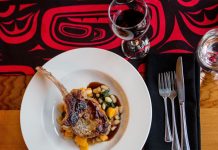Malaysia offers a feast for the senses, from Nasi Lemak’s iconic flavours to Borneo’s wild, fresh ingredients, celebrating a rich, diverse culinary heritage.
From the intoxicating fragrance of Nasi Lemak wafting through the bustling streets of Kuala Lumpur to the earthy, foraged flavours of Borneo’s Sarawak region, Malaysia offers a culinary adventure. This journey spans the spectrum of culture, history, and nature.
Each dish tells a story—whether it’s the creamy coconut rice of Nasi Lemak or the wild, untamed ingredients found deep in the jungles of Borneo. Malaysia is a feast for the senses, where the land and sea collide in an exuberant celebration of flavours and traditions.
These experiences are waiting to be discovered by both first-time visitors and seasoned travellers alike.
Nasi Lemak: A Taste of Malaysia
When I tasted Nasi Lemak at a Malaysian restaurant in Vancouver recently, the familiar aroma transported me straight to the streets of Kuala Lumpur.
Often called Malaysia’s unofficial national dish, this meal reflects the country’s multicultural soul: the creamy coconut rice, fiery sambal, crispy anchovies, crunchy peanuts, and a perfectly soft-boiled egg. “This is breakfast,” says Malaysian Consul, Padli Ahmad, “and it’s also an all-day meal.”
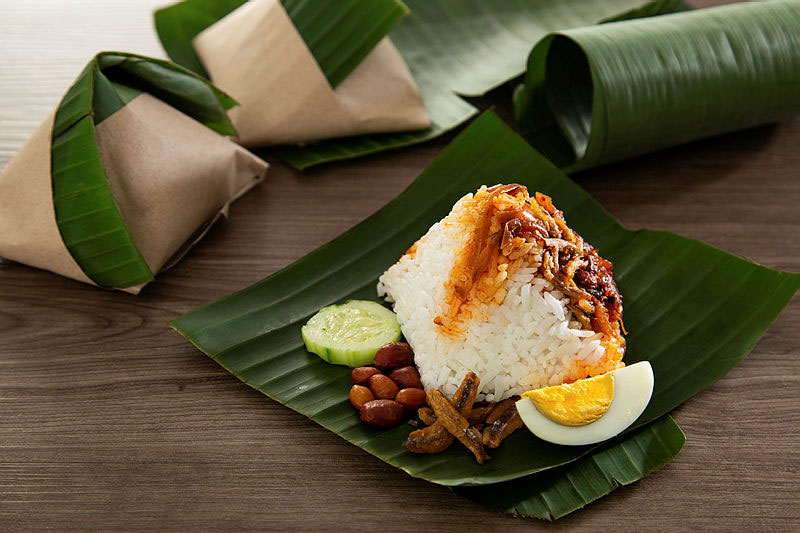
Nasi Lemak blends Malay, Chinese, and Indian influences into a balanced, textural masterpiece. The coconut rice, rich and aromatic, serves as the base, while the sambal adds a spicy kick that tingles the tongue. Crispy anchovies and peanuts deliver crunch, while the boiled egg smooths it all out.
Whether wrapped in banana leaves on street corners or served gourmet-style in cafes, Nasi Lemak is an edible snapshot of Malaysia’s vibrant multicultural fabric. It even stands as a contender for UNESCO World Heritage status.
Penang & Melaka: Melting Pot of History and Flavour
Heading north from Kuala Lumpur, the cultural fusion continues in Penang. There, history and flavour blend seamlessly in quintessential dishes.
Char Kway Teow, stir-fried noodles with prawns, Chinese sausage, and egg, bursts with wok-charred flavours and smoky undertones that reflect the island’s rich history.
A dish that embodies the best of Chinese, Malay, and Indian culinary traditions, it’s a meal that tells the story of Penang’s diverse past. Meanwhile, the tangy Assam Laksa, a tamarind-based noodle soup, delivers an unforgettable balance of sour and spicy with each spoonful.
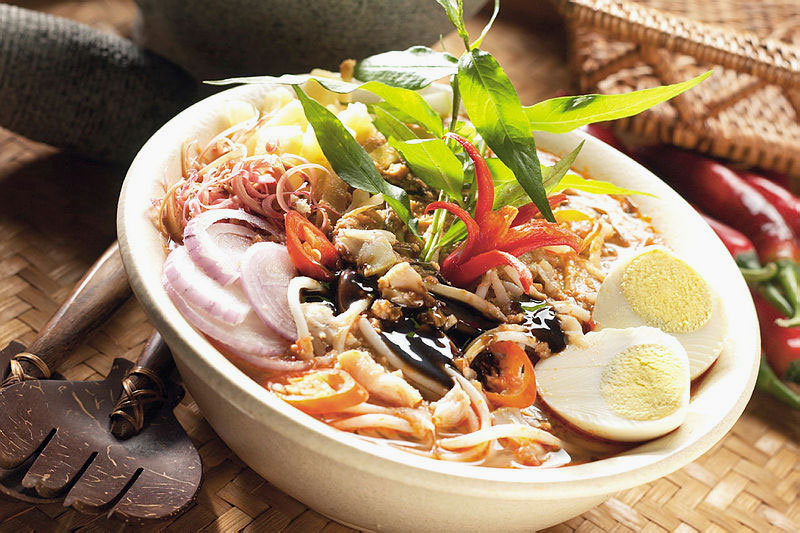
Further south in Melaka, centuries of cultural exchange come together in dishes like Chicken Rice Balls. This Nyonya dish, a fusion of Malay and Chinese flavours, features poached chicken. The chicken is served with rice pressed into small, satisfying portions. It exemplifies Melaka’s ability to thrive despite its colonial past.
You can also taste the Portuguese influence in Devil’s Curry, a spicy, tangy stew rich in bold flavours. It’s a reminder of how Melaka’s unique blend of cultures continues to shape its food scene today.
From City Streets to Borneo’s Wild Cuisine
Leaving behind the urban buzz, we journey to Kuching, in Sarawak, Borneo. Here, food tells a deeper, more primal story—one closely tied to nature.
As a UNESCO Creative City of Gastronomy, Kuching celebrates indigenous ingredients like midin (fiddlehead shoots) and dabai fruit (Borneo olives).
At the Satok Weekend Market, the air hums with the chatter of locals and the sizzle of food stalls. Fresh vegetables, colourful fruits, and aromatic herbs fill the air, while the bustling market pulses with the earthy fragrance of wild greens and the sweet, tangy scent of tropical fruit.
I meet Bangi, a local farmer, proudly displaying these vivid greens and dark purple glossy olives. “These,” she says, “are our roots.”
Dabai fruit has a rich, buttery texture that blends the flavours of brie, olives, and sweet carrots. It’s an unexpected delight that ties Kuching’s food to the untamed jungles surrounding it.
Midin, a wild fern harvested from the rainforest, adds an earthy crunch to stir-fries. It brings the forest into the dish with every bite. These ingredients reflect the deep connection between Kuching’s food culture and its wild, natural surroundings.
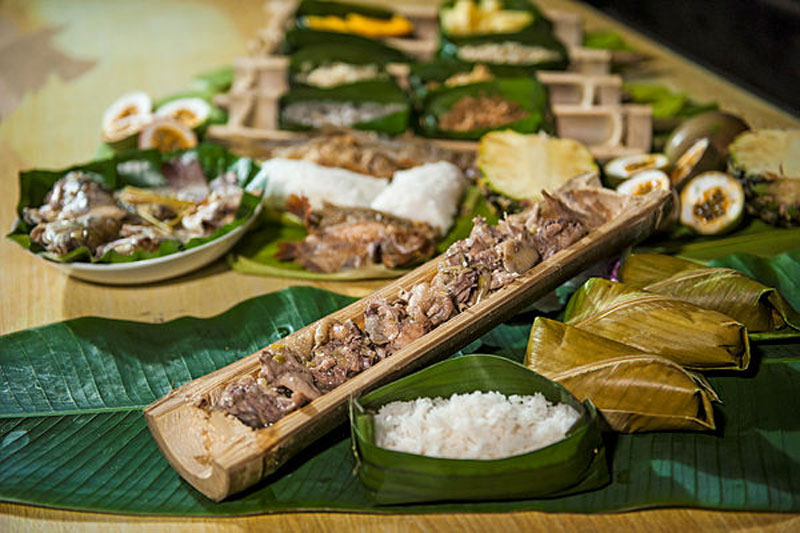
One dish that truly stands out is Manuk Pansuh—a chicken marinated with indigenous herbs and cooked inside a bamboo stalk over an open flame. The bamboo infuses the chicken with a subtle smokiness, while the herbs enhance its depth of flavour. This dish symbolizes Kuching’s harmonious relationship with the forest, river, and earth.
Yet, Kuching’s culinary traditions face new challenges. As modern dining trends and fusion cuisine continue to rise, the authenticity of time-honoured dishes is questioned. Local chefs must strike a delicate balance between preserving their culinary heritage and adapting to the evolving tastes of contemporary diners.
Sipadan: The Ocean’s Pure Bounty
From Kuching’s wild jungles, we turn to the tranquil, crystal-clear waters of Sipadan—a place where the ocean provides a pure bounty. Here, seafood is so fresh it requires little more than a squeeze of lime to accentuate its natural flavours.
The soft ripple of the sea and distant waves set the scene. Beneath the surface, cool water envelops me as fish dart through radiant coral, their scales glinting. Sea turtles glide by, timeless and serene. Floating weightlessly in this underwater paradise, I’m immersed in its quiet magic.

At the Sipadan-Kapalai Dive Resort, I sample the day’s catch: delicate grilled fish and sweet tiger prawns, lightly charred to bring out their sweetness.
A quick squeeze of lime transforms these simple yet exquisite ingredients into an unforgettable culinary experience.
The sensation of warm sunshine on my skin complements the refreshing coolness of the sea breeze, enhancing the moment.
As a testament to its remarkable underwater ecosystem, Malaysia has earned top honours in the prestigious Scuba Diving 2025 Readers’ Choice Awards. This solidifies its reputation as a premier destination for divers.
Sipadan, one of the country’s world-class dive sites, exemplifies Malaysia’s awe-inspiring marine life and biodiversity. While Sipadan is renowned for its underwater beauty, its culinary offerings—showcasing the bounty of the sea—equally captivate travellers, offering a distinct adventure.
With increased tourism comes the responsibility of preserving Sipadan’s pristine ecosystem. Sustainable fishing practices are becoming crucial as the demand for fresh seafood grows. Balancing the needs of the local community, tourism, and the environment will be key to ensuring that Sipadan’s seafood remains as pure and pristine as the surrounding waters.
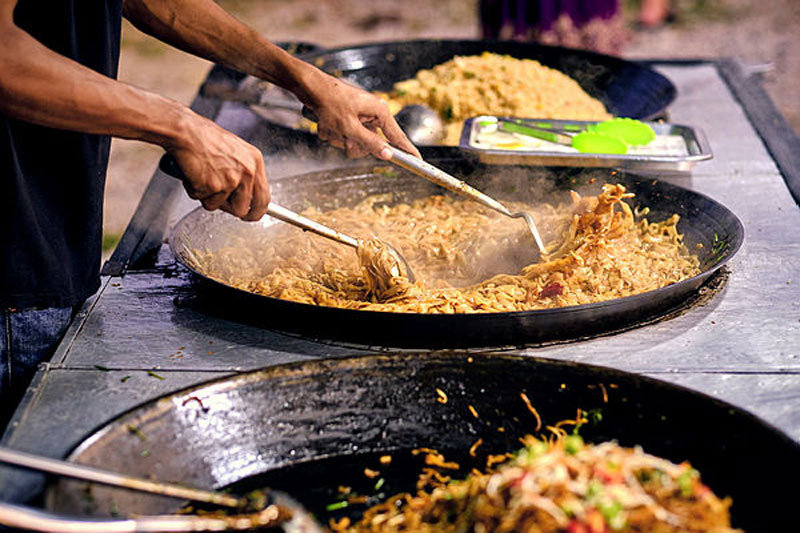
A Culinary Adventure Awaits
From the lively streets of Penang and Melaka to the untamed wilderness of Kuching and Sipadan, Malaysia offers a diverse food scene. It’s as captivating as the country’s landscapes. Each region reveals a unique chapter in the country’s history, culture, and deep connection to its land and sea.
Whether you’re savouring the rich layers of Nasi Lemak, exploring the wild ingredients of Borneo, or indulging in the ocean’s pure bounty in Sipadan, Malaysia promises a culinary adventure. It’s one that will leave you yearning for more.
As tourism continues to shape Malaysia’s culinary future, preserving traditional practices is essential. Embracing modern trends will be the key to maintaining the integrity of this gastronomic treasure.
Whether you’ve visited Malaysia before or are just planning your first trip, its food scene is one worth diving into now—on every plate, in every bite.





